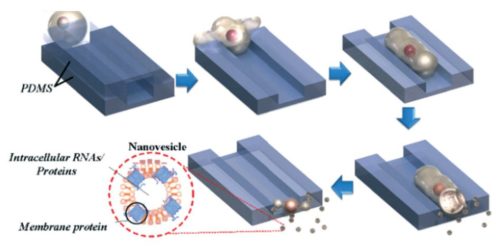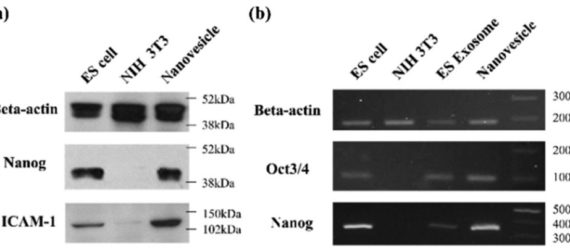Exosomes assay
Fabrication of mimetic nanovesicles
Fabrication of mimetic nanovesicles
Nanovesicles formation
In in vivo conditions, a small number of exosomes are secreted being difficult to collect them. Until now, immiscible flow microfluidic channels using micronozzle or flow have been used, however these liposomes lack membrane proteins.
Using 4Dcell microchannels, cells are forced through hydrophilic microchannels generating artificial nanovesicles. These nanovesicles are derived from cell membranes and contain intact membrane proteins.
Process of nanovesicles formation in microchannels [1]

As cells flow through slits in microchannels, the cells are stretched. At the outlet of the microchannels, nanovesicles are generated possibly due to abrupt pressure change and their elongated shape caused by shear stress.
Comparison between nanovesicles formed and exosomes (Proteins and mRNA) [1]

(a) Western-Blot. Nanog and ICAM-1, intracellular proteins in murine embryonic stem cells (ES cells), are also found in the nanovesicle formed after the use of microchannels.
(b) Reverse-transcription -PCR. Nanoversicles contains Oct3/4 and Nanog ike in ES cells which confirms the presence of mRNA.
[1] Jo, W., et al. (2014). Lab on a Chip, 14(7), 1261-1269.